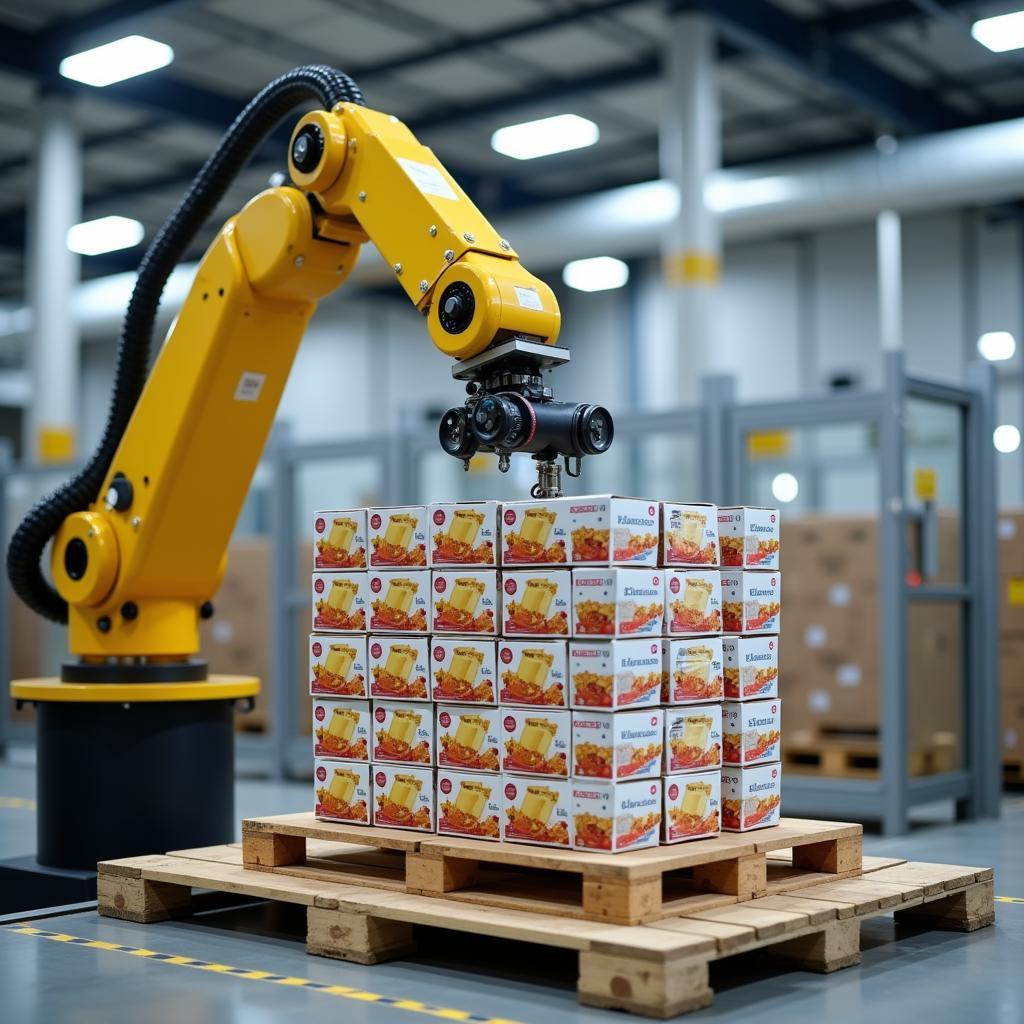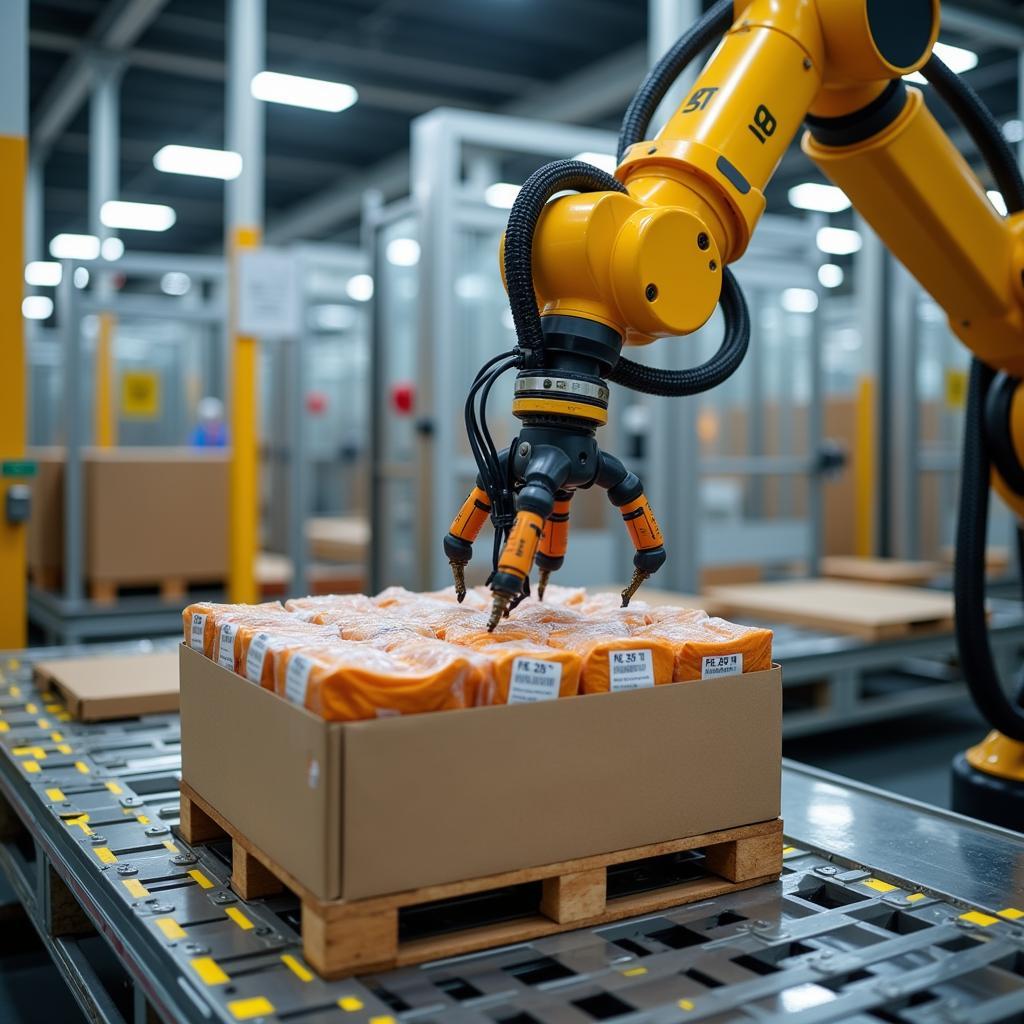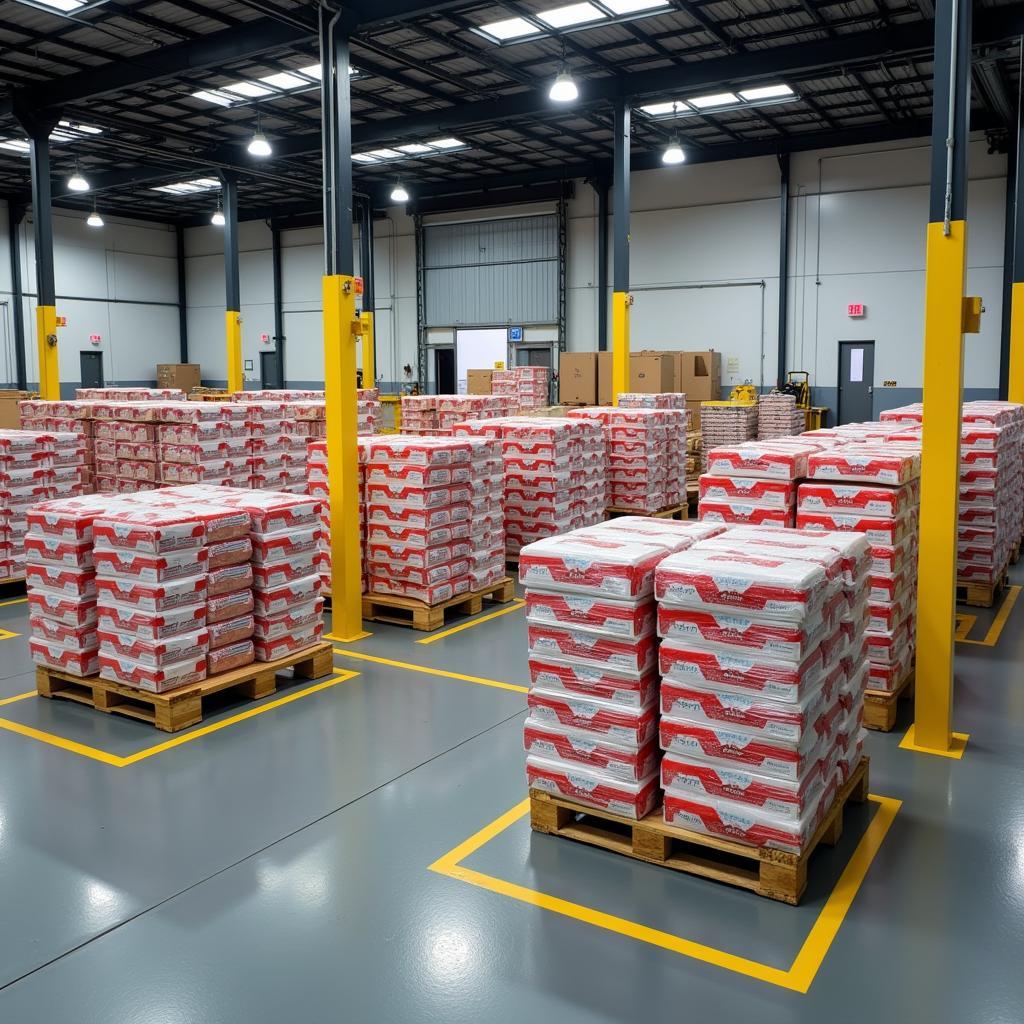Food Palletizing is a crucial step in modern food processing, ensuring safe and efficient transportation and storage. It involves strategically arranging packaged food products onto pallets for shipment and warehousing. From optimizing warehouse space to minimizing product damage, effective palletizing is essential for maintaining product integrity and streamlining supply chain operations.
What is Food Palletizing?
Food palletizing is the process of stacking packaged food items onto a pallet, creating a stable unit load for efficient handling, storage, and transportation. This process typically involves automated systems or manual labor, depending on the scale of the operation and the type of product. Proper palletizing techniques are crucial for preventing damage during transit and ensuring food safety.
Why is Food Palletizing Important?
Food palletizing plays a vital role in maintaining the quality and safety of food products throughout the supply chain. Efficient palletizing maximizes warehouse space, reduces handling time, and minimizes the risk of product damage. This ultimately leads to cost savings and improved customer satisfaction.
Properly palletized food products are less susceptible to damage during transportation, reducing waste and preserving product quality. Additionally, palletizing allows for efficient use of warehouse space, maximizing storage capacity and minimizing storage costs.
 Food Palletizing Process in a Modern Facility
Food Palletizing Process in a Modern Facility
Different Methods of Food Palletizing
There are several methods for palletizing food products, each suited to different types of products and operational needs. These methods include:
- Manual Palletizing: Involves manually stacking boxes or other packaged food items onto pallets. This method is suitable for smaller operations or specialized products.
- Automated Palletizing: Utilizes robotic systems to stack products onto pallets. This method is ideal for high-volume operations and offers increased speed and efficiency.
- Semi-Automated Palletizing: Combines manual and automated processes. This approach allows for flexibility and can be cost-effective for medium-sized operations.
Choosing the Right Palletizing Method
Selecting the appropriate palletizing method depends on several factors, including:
- Production Volume: High-volume operations benefit from automated systems, while smaller operations may find manual palletizing more cost-effective.
- Product Type: Fragile or irregularly shaped products may require specialized palletizing techniques.
- Budget: Automated systems require a higher initial investment but can offer long-term cost savings.
 Automated Food Palletizing System with Robotic Arm
Automated Food Palletizing System with Robotic Arm
Best Practices for Food Palletizing
To ensure efficient and safe food palletizing, consider these best practices:
- Pallet Selection: Choose pallets that are appropriate for the weight and size of the products.
- Stacking Pattern: Utilize a stable and consistent stacking pattern to prevent shifting during transit.
- Wrapping and Securing: Securely wrap pallets with stretch film or banding to prevent movement and protect against damage.
- Labeling: Clearly label pallets with relevant information, including product name, quantity, and destination.
Ensuring Food Safety During Palletizing
Food safety should be a top priority during palletizing. Ensure that the palletizing area is clean and sanitized. Use food-grade pallets and packaging materials to prevent contamination.
“Maintaining a clean and organized palletizing area is critical for ensuring food safety. Proper sanitation protocols and the use of food-grade materials are essential for preventing contamination and preserving product integrity.” – Dr. Emily Carter, Food Safety Consultant
Optimizing Your Food Palletizing Process
Optimizing your food palletizing process can lead to significant improvements in efficiency and cost savings. Consider implementing these strategies:
- Regular Equipment Maintenance: Prevent downtime and ensure consistent performance by regularly maintaining palletizing equipment.
- Employee Training: Properly trained employees can contribute to a safer and more efficient palletizing process.
- Process Automation: Explore automation opportunities to increase throughput and reduce labor costs.
 Optimized Food Palletizing Workflow in a Warehouse
Optimized Food Palletizing Workflow in a Warehouse
“Investing in employee training and exploring automation options can significantly optimize the palletizing process, resulting in increased productivity and reduced operational costs.” – John Miller, Supply Chain Management Expert
Conclusion
Food palletizing is a critical component of the food supply chain, ensuring efficient handling, storage, and transportation of food products. By implementing best practices and optimizing your palletizing process, you can improve efficiency, minimize product damage, and maintain food safety. Effective food palletizing contributes to a streamlined supply chain and enhanced customer satisfaction.
FAQ
-
What is the purpose of food palletizing? Food palletizing creates stable units for efficient handling, storage, and transport.
-
What are the different methods of food palletizing? Manual, automated, and semi-automated.
-
How do I choose the right palletizing method? Consider production volume, product type, and budget.
-
What are some best practices for food palletizing? Proper pallet selection, stacking patterns, wrapping, and labeling.
-
How can I optimize my food palletizing process? Regular maintenance, employee training, and process automation.
-
What is the importance of food safety in palletizing? Prevents contamination and maintains product integrity.
-
What materials should be used for food palletizing? Food-grade pallets and packaging materials.
Need help with food palletizing? Contact us at Phone Number: 02437655121, Email: minacones@gmail.com or visit us at 3PGH+8R9, ĐT70A, thôn Trung, Bắc Từ Liêm, Hà Nội, Việt Nam. We have a 24/7 customer service team. Explore our website for more information on food processing solutions.